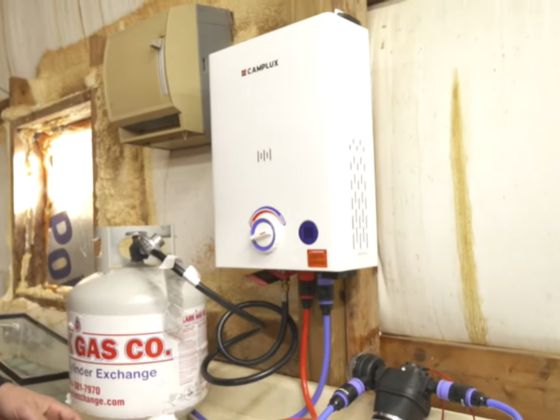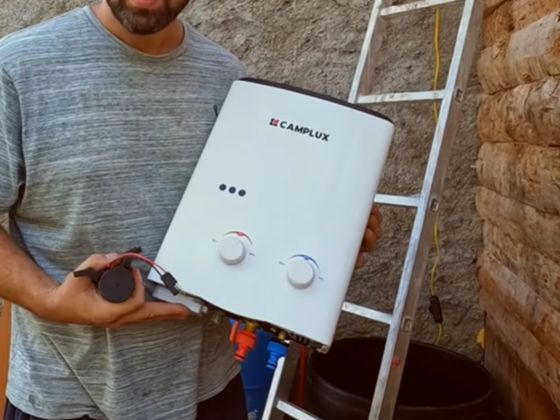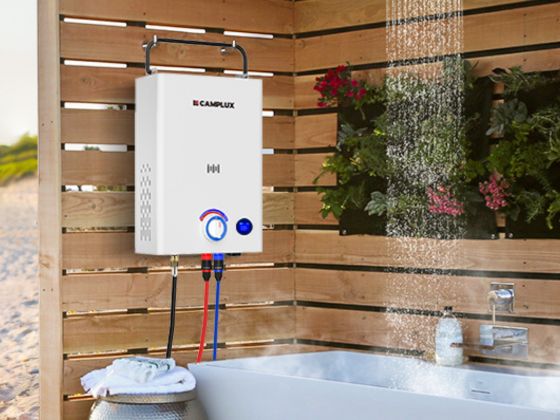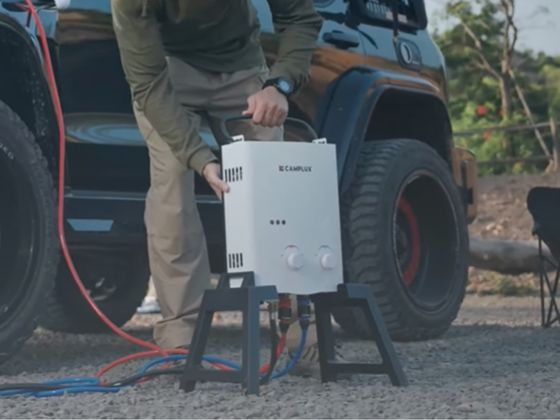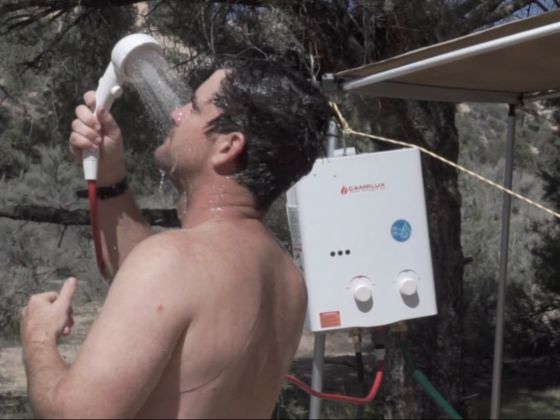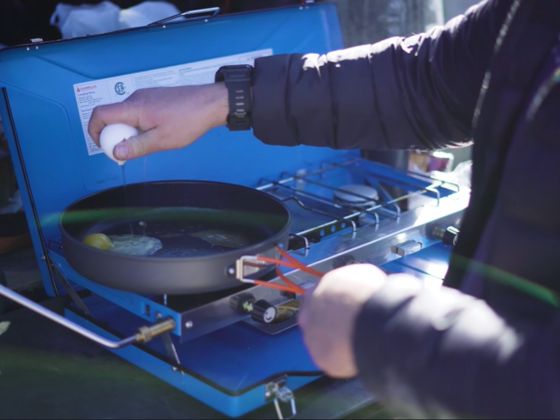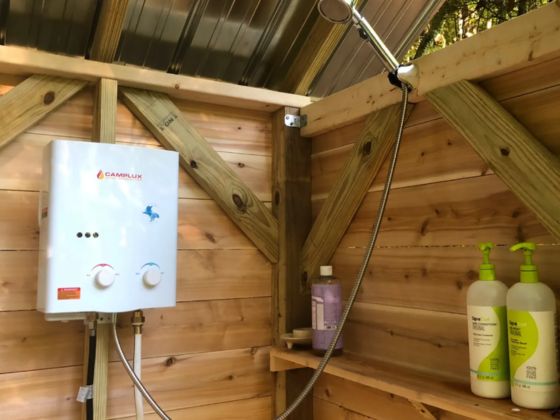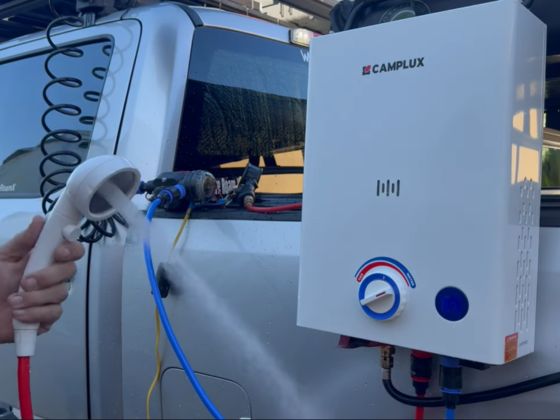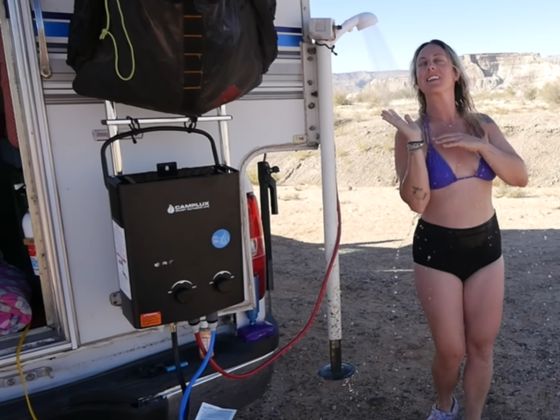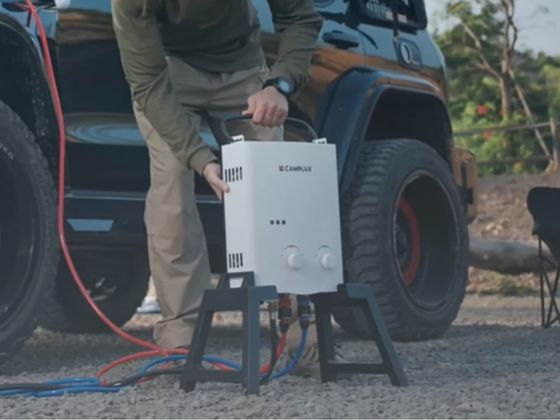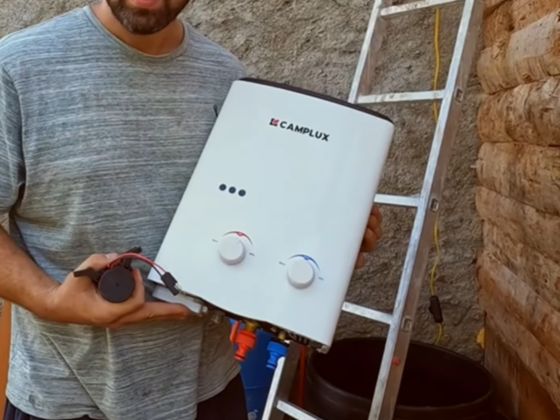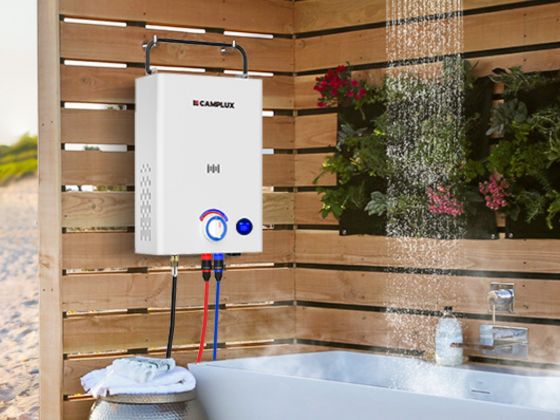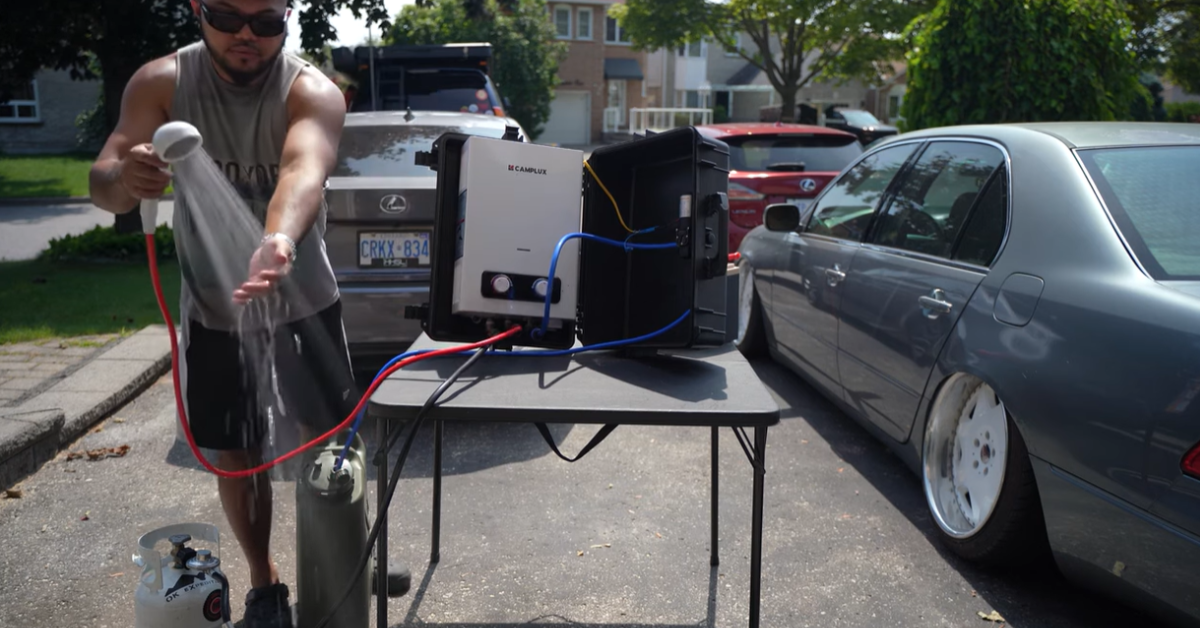If your outdoor water heater handles everything from backyard rinses to beach trips and van life, it deserves a little love. The good news? You don't need a toolbox or a spare weekend. With a few super-simple habits, you can keep it running safely and efficiently for years—through salt air, red dust, and the odd cold snap.
Quick takeaways (the "too long, didn't read")
-
Pick a good spot: ventilated, shaded, off the ground.
-
Do a 1-minute pre-start check (hose, smell, flame).
-
Give it 5 minutes a month: rinse the inlet filter, wipe dust/salt, eyeball the O-rings.
-
Match care to the season: wipe off salt near the coast; drain before frost inland.
-
Filter and descale: clean water in = longer life and stable heat.
Where Aussies actually use these units (and what that means)
-
Camping & vans: more dust, more packing/unpacking → focus on filters and hose wear.
-
Coastal homes & shacks: salt mist → quick freshwater wipe to slow corrosion.
-
High country & inland winter: occasional frost → drain the unit when not in use.
1) Location & install: half the battle won
Keep it simple—three rules:
-
Shade and shelter: avoid direct sun and pooling water; under an awning or eave is ideal.
-
Breathing room: leave space behind/around the case so heat can escape and you can reach the filter.
-
Stable and level: mount or place it solidly; wobble and knocks shorten life.
Tip: If your Camplux model has a protective cover or bracket, use it. Getting the heater off bare concrete or damp soil helps.
2) The 1-minute pre-start check
Before you hit the outdoor hot shower:
-
Look: gas hose isn't cracked or kinked; connections hand-tight.
-
Smell: no gas smell. If you smell gas, stop, turn everything off, ventilate.
-
Test flame: ignition is quick; flame is mostly blue and steady.
That's it. Sixty seconds, real impact.
3) Five-minute monthly care (no tools, no stress)
Do this once a month—or after a dusty trip:
-
Rinse the inlet filter: unscrew the little filter at the cold-water inlet, flush under the tap, pop it back.
-
Wipe the exterior: damp cloth only. Remove dust, cobwebs, and salt film, especially near the coast.
-
Check soft parts: look at the shower hose, O-rings, and gas hose. If anything's brittle or cracked, replace it.
-
Battery ignition? Swap for fresh batteries and make sure contacts aren't corroded.
These small resets keep flow stable and stress low on internal parts. A five-minute monthly routine to clean and maintain your unit avoids most of that.

4) Seasonal tweaks that actually matter
-
Summer / dusty conditions: after use, quick wipe so grit doesn't work into seams and knobs.
-
Coastal living: once a month, freshwater wipe on metal surfaces to slow corrosion.
-
Frost risk: after use or before storage, drain residual water (run briefly on low, disconnect, tip to drain). Consider a simple insulating cover if temperatures drop below zero.
Reminder: Many modern units include freeze-protection features, but draining before storage is still the safest play.
5) Water quality & limescale: the silent lifespan killer
Hard water and sediment cause temperature swings, reduced flow, noisy operation, and premature wear.
-
Use a basic pre-filter: a cheap sediment filter on the inlet stops sand and rust.
-
Descale every 3–6 months (frequency depends on hardness): run a short cycle with a mild descaler or a diluted white-vinegar solution as per your manual.
-
Rainwater/bores: filter first; fine silt can clog jets and the heat exchanger.
You'll notice steadier temps and fewer ignition hiccups.
6) Gas & power basics (simple and safe)
-
Leak check with soapy water: brush on a little dish-soap solution at connections; bubbles = leak. Turn off gas and address it. Never use a flame to "check."
-
Regulator & gas bottle: keep upright, away from heat. With 9kg BBQ bottles or Swap-and-Go, secure them so they can't tip in wind.
-
Cables & connectors: keep dry and undamaged; replace frayed cords or perished O-rings straight away.
In Australia, any internal gas work must be done by a licensed gasfitter. User-level checks are fine; repairs inside the gas train are not DIY.
7) After-use & storage routine (this "puts life back in the tank")
When you're done for the day or packing up:
-
Turn off water, gas, and power.
-
Drain residual water. Disconnect hoses and tip gently so trapped water escapes.
-
Dry and coil: shake off droplets, wipe surfaces, coil hoses without sharp bends.
-
Store smart: dry, shaded, off the ground—ideally in a bag or crate so it won't get knocked.
Takes a couple of minutes; saves years.
8) Cheap accessories that punch above their weight
-
Spare inlet filter & O-rings: a few dollars, zero downtime.
-
Inline sediment filter: keeps grit out; great with river, tank, or bore water.
-
Protective cover / carry bag: reduces UV, dust, and knocks.
-
Fresh batteries (if battery-ignition): solves 80% of "won't light" moments.
9) When to call a licensed tech or the seller's support
Stop using the unit and get help if you notice:
-
Persistent yellow/orange flame or black soot.
-
Gas smell that returns after re-seating connections.
-
Frequent flameouts or error codes despite clean filters and new batteries.
-
Physical damage (warped case, heavy corrosion, water inside the electronics).
A quick professional look beats a costly failure.
Your one-page care calendar
Before each use (1 minute)
-
Look hose & connections → Smell for gas → Check flame blue/steady.
-
Rinse inlet filter → Wipe dust/salt → Check O-rings/hoses → Replace batteries if needed.
Seasonal
-
Coast: freshwater wipe on metal bits.
-
Frost: drain unit after use; use a cover if stored in the cold.
-
Dust: quick wipe-down post-trip.
Every 3–6 months
-
Mild descale (more often if water is hard or flow drops).

FAQs
Can I use rainwater or river water?
Yes—filter first. A simple inline filter prevents silt and grit from clogging the heat exchanger and shower head.
How often should I descale?
Start with every 3–6 months. If you see temperature fluctuation, reduced flow, or more ignition retries, bring it forward.
Do I need a pro to install it?
Mounting and basic setup are fine for most portable units, but any internal gas work must be done by a licensed gasfitter in Australia.
Are portable and wall-mounted care the same?
The basics are the same for a portable water heater (filter, wipe, drain). Fixed units need proper weather protection and clearances per their manual.
Final word
Extending the lifespan of your outdoor water heater isn't about big weekend projects—it's the small, regular habits: a quick look before you start, a five-minute tidy each month, a seasonal tweak for your local climate, and clean water in. Do those, and your heater stays reliable for the long haul—through camping trips, backyard showers, and everything in between.
If you found this useful, bookmark it and grab the care calendar above for your glovebox or van door. Happy hot-watering!

